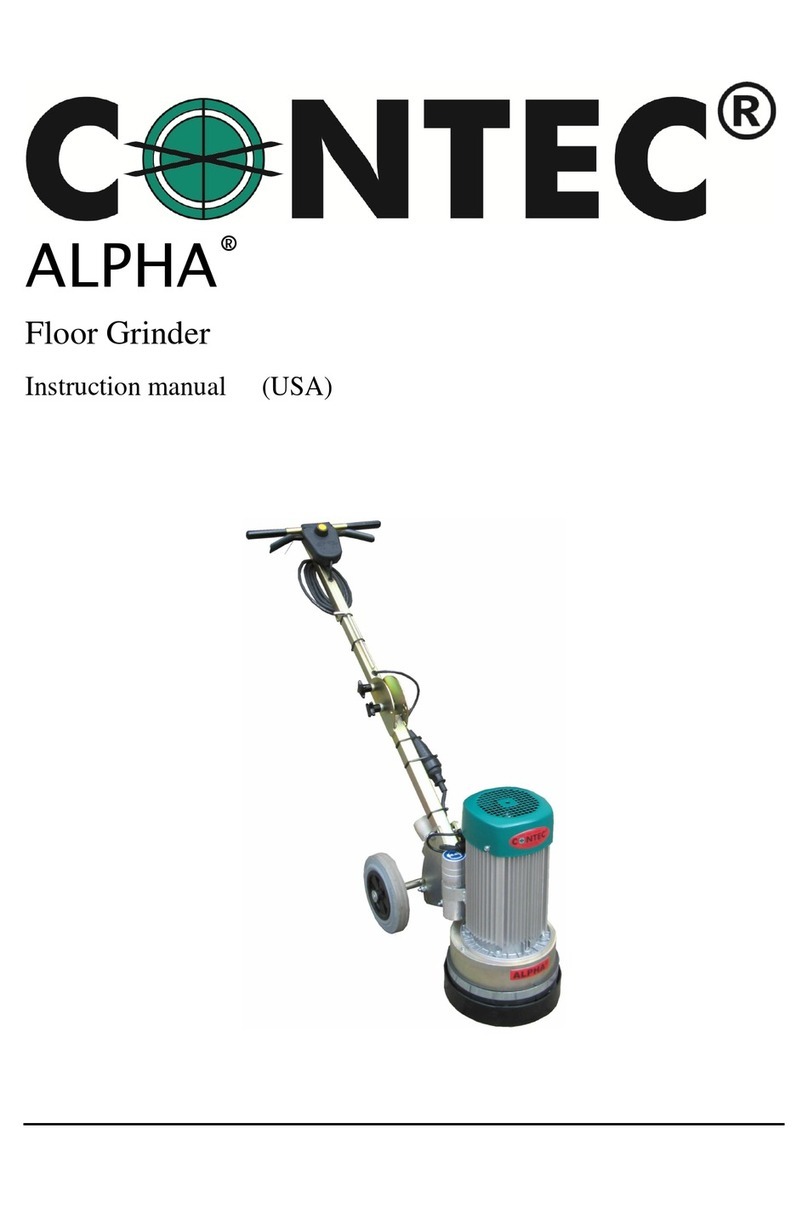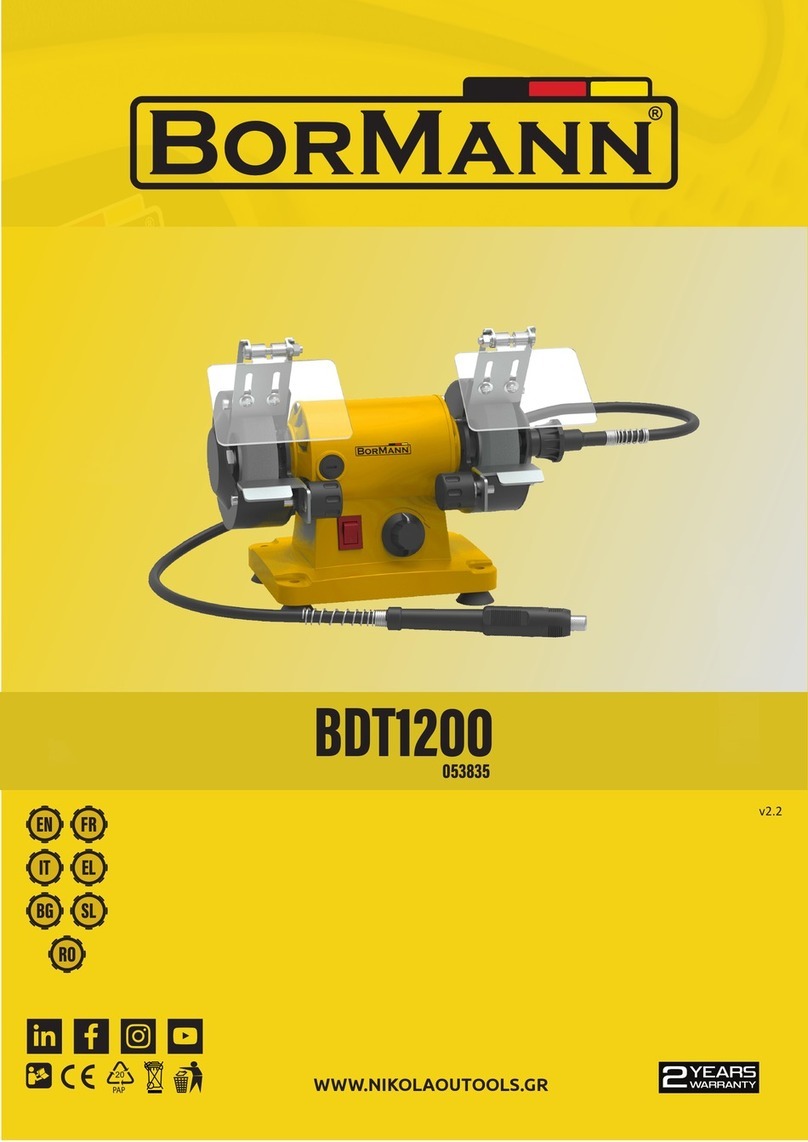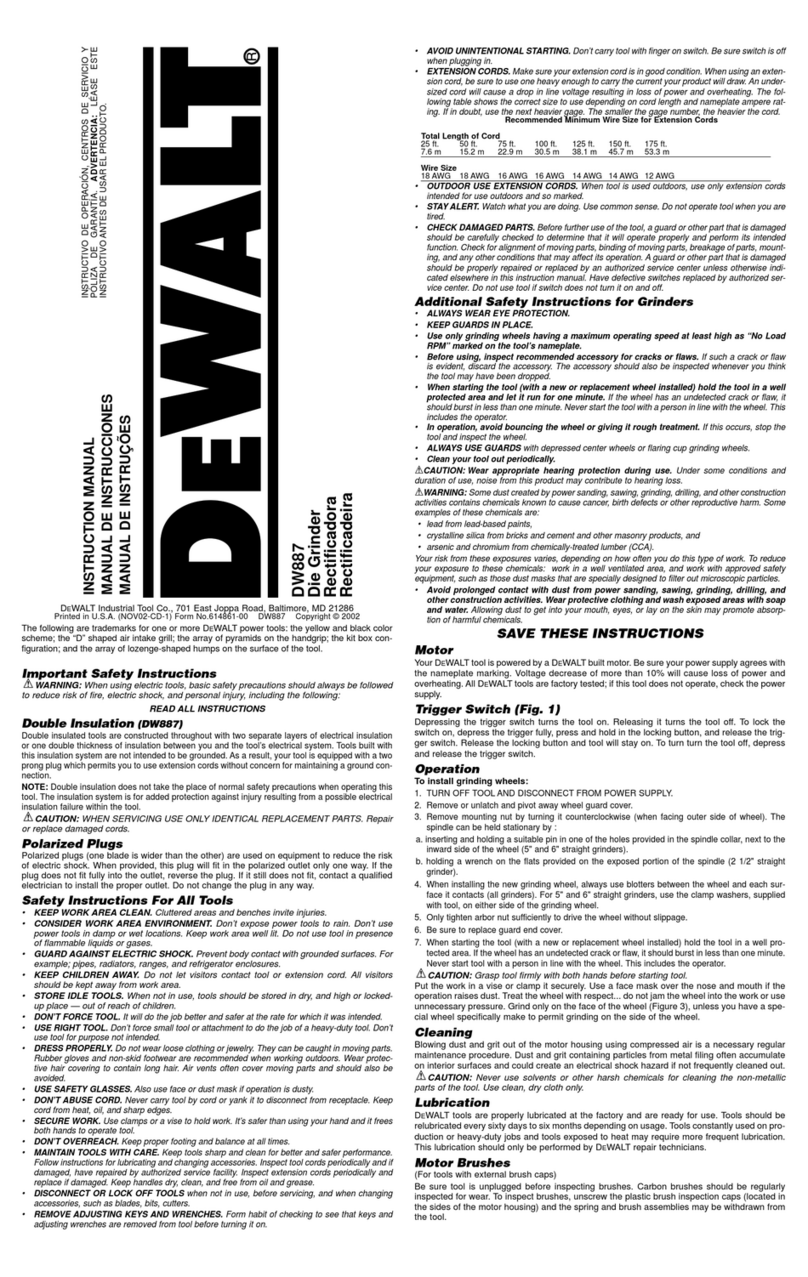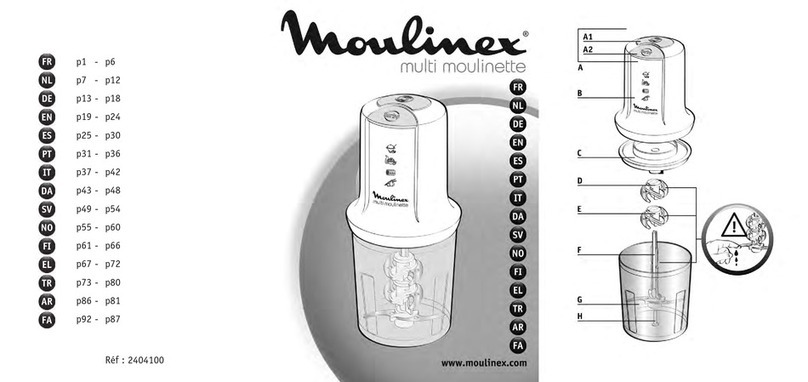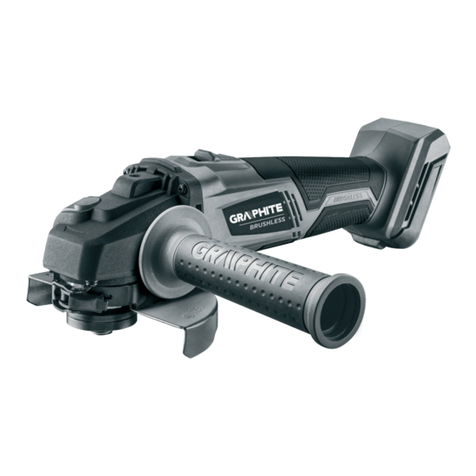tormek T7 User manual

!
simple and accurate
Grinding Angle Adjustment
with the adjustable knife-jig
on the
Tormek-T7 grinder
by Ton Nillesen © 2013


16 Grinding Angle Adjustmentl © 2013 Ton Nillesen 1
simple and accurate
Grinding Angle Adjustment
with the adjustable knife-jig on the Tormek-T7 grinder
Contents
1. Introduction..........................................................................................................2
2. The cosine rule.....................................................................................................2
3. The knife jigs........................................................................................................3
4. Adjustment of the grinding angle..........................................................................3
5. Range of grinding angles......................................................................................5
6. Adjustment tables.................................................................................................6
Table 1. Stone diameter=250 mm ............................................................................7
Table 2. Stone diameter=240 mm ............................................................................8
Table 3. Stone diameter=230 mm ............................................................................9
Table 4. Stone diameter=220 mm ..........................................................................10
Table 5. Stone diameter=210 mm ..........................................................................11
Table 6. Stone diameter=200 mm ..........................................................................12
Table 7. Stone diameter=190 mm ..........................................................................13
Table 8. Stone diameter=180 mm ..........................................................................14
Table 9. Personal choices.......................................................................................15
Document generated in free software office package: Apache OpenOffice

2 Grinding Angle Adjustmentl
1. Introduction
After years of grinding my tools on a bench grinder, I decided to buy a Tormek-T7
grinder in order to get better control on the sharpening and eliminate the risk of
loosing hardening by overheating
After some experimenting and grinding of theavailable knives, blades, scissors etc.
it became clear to me that the reproducibility of the grinding angles was rather poor
if the adjustment was done according to the procedure described in the handbook.
Good reproduction can be obtained if the bevel is coloured with a marker pen and
the support is adjusted until the stone clears the bevel.
That method however is not fast and easy. I wanted a simple method which could
be realised by measuring and adjusting the position of the universal support and the
length of the adjustable jig.
This document describes the method which I use since then, it derives the mathem-
atical background and gives tables which can be used instead of the mathematical
formulas.
Denominations
In the handbook you can read:
“In the literature on this subject, there are various denominations for the edge angle.
It is called bevel angle, cutting angle or sharpening angle. The edge angle on a tool
with bevels on both sides is called the included bevel angle, the effective bevel
angle, profile angle, total cutting angle or the combined bevel angle.”
That was rather confusing, therefore I decided to use “grinding angle” which in my
opinion is unambiguous. Dutch however is the native language of the author rather
than English, so it might turn out to be “double-dutch” for the reader. The author
asks for comprehension if that might happen occasionally.
2. The cosine rule
The proposed adjustment procedure is based on the cosine rule.
In trigonometry, the cosine rule (also known as the cosine formula or law of cosines)
relates the lengths of the sides of a triangle to the cosine of the opposite angle.
Using notation as in Fig. 2.1, the cosine rule states:
c2=a2+b2!2ab"cos(")
where "denotes the angle con-
tained between sides of lengths a
and b and opposite the side of
length c.
The law of cosines is useful for
computing the third side of a tri-
angle when two sides and their en-
closed angle are known, and in
computing the angles of a triangle
if all three sides are known.
Identical formulas can be given for
the other sides::
a2=b2+c2!2bc"cos (#)
and
b2=a2+c2!2ac"cos ($)
Fig. 2.1: A triangle. The angles !(or A),
"(or B), and #(or C) are respec-
tively opposite the sides a, b, and c.
"
$#
c
a b
B A
C
© 2013 Ton Nillesen 15
Table 9. Personal choices
Knife grinding
angle

14 Grinding Angle Adjustmentl
Adjustment of the length A between adjustable stop and knife-edge
for a grinding edge !
at a preset of the distance S between support-top and stone
Table 8. Stone diameter=180 mm
S= 65 70 75 80 85 90 95 100 105 110 115 120 125
!(°) Adjustable length A (mm)
10 118 124 130 135 141 147 153 158 164 170 175 181 186
11 116 122 128 134 140 146 151 157 163 168 174 179 185
12 115 121 127 133 139 144 150 156 161 167 172 178 183
13 114 120 126 131 137 143 149 154 160 166 171 177 182
14 112 118 124 130 136 142 147 153 159 164 170 175 181
15 111 117 123 129 135 140 146 152 157 163 168 174 179
16 110 116 122 128 133 139 145 150 156 162 167 173 178
17 109 115 120 126 132 138 143 149 155 160 166 171 177
18 107 113 119 125 131 137 142 148 153 159 164 170 175
19 106 112 118 124 130 135 141 147 152 158 163 169 174
20 105 111 117 123 128 134 140 145 151 156 162 167 173
21 104 110 116 122 127 133 139 144 150 155 161 166 172
22 103 109 115 120 126 132 137 143 149 154 160 165 170
23 102 108 114 119 125 131 136 142 147 153 158 164 169
24 101 107 112 118 124 130 135 141 146 152 157 163 168
25 100 106 111 117 123 128 134 140 145 151 156 161 167
26 99 105 110 116 122 127 133 138 144 149 155 160 166
27 98 104 109 115 121 126 132 137 143 148 154 159 165
28 97 103 108 114 120 125 131 136 142 147 153 158 164
29 96 102 107 113 119 124 130 135 141 146 152 157 162
30 95 101 106 112 118 123 129 134 140 145 151 156 161
© 2013 Ton Nillesen 3
3. The knife jigs
This document refers to the knife grinding jig “Knife Jig SVM-45” (see Fig. 3.1) and
the jig for longer knfes “long Knife Jig SVM-140” (see Fig. 3.2).
The jigs rest on the “Universal Support” of which the position with respect to the
grinding stone can be adjusted. See also Fig. 4.1.
Fig. 3.1: Knife Jig SVM-45 Fig. 3.2: long Knife Jig SVM-140
Apart from the adjustable clamp ('1' in Fig. 3.3) for
holding knives of any thickness, the jigs comprise
an adjustable stop (2) by which the distance from
the knife edge to the universal support can be ad-
justed to the desired length. Thus we have the fol-
lowing parameters for adjusting the grinding angle:
• the distance from the universal support to the
stone
• the distance from the knife edge (in the clamp)
to the adjustable stop
4. Adjustment of the grinding angle
The adjustment procedure will be explained with reference to Fig. 4.1, which gives
the notation of the available parameters.
!= grinding angle.
A = Adjustable length between the adjustable stop and the knife edge
K = length of jig between support-top and Knife edge
S = distance from support-top to the Stone
R1, R2 = Radius of the stone=R
D = Distance from support to the centre of the stone (D=S+R2=S+R)
Notes:
• The reference point on the jig for the distances K and S (also D) is above the
centre of the universal support.
• The maximum value of D is 215 mm
• Length between stop and clamp edge is adjustable from 108 to 125 mm
• Diameter of support bar is 12 mm
• The stone diameter varies from 250 mm to a recommended minimum of
180 mm.

4 Grinding Angle Adjustmentl
Consider the triangle determined by the knife jig, via R1to the centre of the stone
and via the long side D (=R2+S) back to the jig on the universal support.
The angle opposite side D (=S+R) is equal to 90°+!because the grinding angle !
is equal to the angle between the knife blade and the tangent to the stone while the
radius R1is perpendicular to the tangent.
With the cosine-law we get
D
2
=K
2
+R
1
2
!2!K!R
1
!cos (90 °+!)
which can be simplified to:
D2=K2+R2+2!K!R!sin(!)
[F0]
So the grinding angle !is determined by:
!=arcsin
(
D2"K2"R2
2!K!R
)
[F1]
and D should be adjusted to
D=
!
(K2+R2+2!K!R!sin(!))
[F2]
If D is fixed, then the grinding angle can be adjusted by changing the distance K
with the adjustable stop.
The required length K can be determined by solving K from the following equation
derived from [F0]:
K
2
+2!R!sin (!)!K+R
2
!D
2
=0
That gives:
K="R!sin(!)+
!
R2!sin2(!)+D2"R2
[F3]
We can also express the formulas as a function of the distance S between support
and stone. Then D in formula F1 and F2 should be replaced by S+R:
Formula F2 can then be rewritten as:
S="R+
!
R2+K2+2!K!R!sin(!)
[F4]
Distance S will normally be adjusted in coarse steps of e.g 5-10mm whereas fine
adjustment of the grinding angle will be done via the adjustable stop (A).
By substitution of S+R for D in formula F3 we get:
K="R!sin(!)+
!
R2!sin2(!)+S2+2!S!R
[F5]
As the diameter of the support bar is 12 mm, it follows that A=K+6
Hence
A=6"R!sin(!)+
!
R2!sin2(!)+S2+2!S!R
[F6]
Fig. 4.1: Positioning of the grinding jig
A
grinding jig
R1
!
D=S+R
tangent
universal
support
adjustable
stop adjustable
clamp
grinding
stone
S
R2
K
90°
© 2013 Ton Nillesen 13
Adjustment of the length A between adjustable stop and knife-edge
for a grinding edge !
at a preset of the distance S between support-top and stone
Table 7. Stone diameter=190 mm
S= 65 70 75 80 85 90 95 100 105 110 115 120 125
!(°) Adjustable length A (mm)
10 119 125 131 137 143 149 155 161 166 172 178 183 189
11 118 124 130 136 142 148 153 159 165 170 176 182 187
12 116 123 129 135 140 146 152 158 163 169 175 180 186
13 115 121 127 133 139 145 151 156 162 168 173 179 184
14 114 120 126 132 138 143 149 155 161 166 172 177 183
15 112 119 125 130 136 142 148 153 159 165 170 176 181
16 111 117 123 129 135 141 146 152 158 163 169 174 180
17 110 116 122 128 134 139 145 151 156 162 168 173 179
18 109 115 121 127 132 138 144 149 155 161 166 172 177
19 107 113 119 125 131 137 142 148 154 159 165 170 176
20 106 112 118 124 130 136 141 147 152 158 164 169 175
21 105 111 117 123 129 134 140 146 151 157 162 168 173
22 104 110 116 122 127 133 139 144 150 156 161 167 172
23 103 109 115 120 126 132 138 143 149 154 160 165 171
24 102 108 114 119 125 131 136 142 148 153 159 164 170
25 101 107 112 118 124 130 135 141 146 152 157 163 168
26 100 106 111 117 123 128 134 140 145 151 156 162 167
27 99 105 110 116 122 127 133 139 144 150 155 161 166
28 98 103 109 115 121 126 132 137 143 148 154 159 165
29 97 102 108 114 120 125 131 136 142 147 153 158 164
30 96 102 107 113 119 124 130 135 141 146 152 157 163

12 Grinding Angle Adjustmentl
Adjustment of the length A between adjustable stop and knife-edge
for a grinding edge !
at a preset of the distance S between support-top and stone
Table 6. Stone diameter=200 mm
S= 65 70 75 80 85 90 95 100 105 110 115 120 125
!(°) Adjustable length A (mm)
10 121 127 133 139 145 151 157 163 168 174 180 185 191
11 120 126 132 138 144 150 155 161 167 173 178 184 189
12 118 124 130 136 142 148 154 160 165 171 177 182 188
13 117 123 129 135 141 147 152 158 164 170 175 181 186
14 115 121 127 133 139 145 151 157 162 168 174 179 185
15 114 120 126 132 138 144 150 155 161 167 172 178 183
16 113 119 125 131 137 142 148 154 160 165 171 176 182
17 111 117 123 129 135 141 147 152 158 164 169 175 180
18 110 116 122 128 134 140 145 151 157 162 168 173 179
19 109 115 121 127 132 138 144 150 155 161 167 172 178
20 107 113 119 125 131 137 143 148 154 160 165 171 176
21 106 112 118 124 130 136 141 147 153 158 164 169 175
22 105 111 117 123 129 134 140 146 151 157 163 168 174
23 104 110 116 122 127 133 139 144 150 156 161 167 172
24 103 109 115 120 126 132 138 143 149 154 160 165 171
25 102 108 113 119 125 131 136 142 148 153 159 164 170
26 101 106 112 118 124 130 135 141 146 152 157 163 168
27 99 105 111 117 123 128 134 140 145 151 156 162 167
28 98 104 110 116 122 127 133 139 144 150 155 161 166
29 97 103 109 115 121 126 132 137 143 148 154 159 165
30 96 102 108 114 119 125 131 136 142 147 153 158 164
© 2013 Ton Nillesen 5
5. Range of grinding angles
The handbook of the Tormek grinder gives recommended edge angles in the figure
copied in Fig. 5.1.
So the grinding angle adjustment should cover a range from 10°-20° if grinding is
done at both sides.
With respect to the recommended angle for kitchen knives, I found the following text
on a forum of “the Society for Culinary Arts & Letters”:
The Myth of Thick Edges
The theory is that thick edges (larger angles) last longer than thin
edges, and the majority of the knife buying public wants the edge to
last as long as possible. But it doesn’t work out that way in practice.
Thinner edges actually outlast thicker edges almost all the time.
The thinner edge starts out performing better than the thicker edge.
So even if it does degrade it has a lot of ground to lose before it falls
to the performance level of the thick edge.
Thinner edges cut more easily, putting less stress on the edge. If a
thin edge takes three slices to get through a big slab of raw meat, a
thicker edge might take six or seven. Or three with a lot more force.
The thicker edge is doing twice as much work, degrading twice as
quickly.
Thinner edges are easier to control. Lateral stresses are a significant
source of edge degradation. The more smoothly, accurately and eas-
ily you are able to cut, the less lateral stress you put on the edge.
Thin is good.
Fig. 5.1: Recommended Edge Angles (from the Handbook)

6 Grinding Angle Adjustmentl
Furthermore the following recommendation was given:
The best compromise in the kitchen has proven to be a 15/20 double
bevel. That is a 15 degree back bevel with a 20 degree primary edge
face.
The “double bevel” refers to a second, more acute,angle be-
hind the edge bevel. This secondary bevel is sometimes
called a back bevel or relief angle. The back bevel solves
one of the great problems with V-edges, the fact that the
metal behind the edge gets progressively thicker as the knife
is sharpened over time. Theknife doesn’t cut as well and be-
comes harder and harder to sharpen. The answer is to grind
the shoulders off the edge at an acute angle, i.e. add a back
bevel, then reestablish the primary bevel.
It’s purpose is to thin the metal behind the edge. The thinner
the edge, the greater the cutting ability. However, an edge
that is too thin is susceptibletodamage. So you add a smal-
ler, more obtuse primary bevel to the very edge to give it the
strength to avoid damage from impaction, chipping or rolling.
Following the quoted text, I decided to adjust the grinding
angle of my knives to 10°, resulting in a cutting edge of 20°.
6. Adjustment tables
Formula [F6]:
A=6!R"sin(!)+
!
R2!sin2(!)+S2+2!S!R
is not a simple calcula-
tion. Therefore the required adjustments associated with several parameters have
been combined in tables on the following pages.
• Each table is made for a certain stone diameter, ranging from 250mm to the re-
commended minimum stone diameter of 180mm. The stone diameters in the
tables are reduced in steps of 10mm.
• The top row of each table gives the parameter S for which the underlying
column has been calculated.
• The left column of the table gives the grinding angle !for which the associated
row has been calculated.
• The table cell in the column of a given S, in the row of the desired !gives the
value at which the adjustable stop of the knife-jig should be adjusted.
Example:
Consider a cooks knife with a width of 45mm. The jig can grip the knife to a depth of
14mm. As a consequence the knife edge extends 31mm from the clamp.
Thus the distance A between the knife edge and the adjustable stop can be varied
between 108+31 and 125+31 mm, that is from 139mm to 156mm.
In Table 1. on the following page two column sections have been indicated in fat
lines. The included table cells cover the whole range of grinding angles from 10° to
30° within the adjustable range of 139-156mm. The distance S should then be set
to 85mm or 100mm or values in between.
In Table 9. on page 15 personal notes can be made on
grinding angles chosen for certain knifes
© 2013 Ton Nillesen 11
Adjustment of the length A between adjustable stop and knife-edge
for a grinding edge !
at a preset of the distance S between support-top and stone
Table 5. Stone diameter=210 mm
S= 65 70 75 80 85 90 95 100 105 110 115 120 125
!(°) Adjustable length A (mm)
10 123 129 135 141 147 153 159 165 171 176 182 188 193
11 121 127 134 140 146 151 157 163 169 175 180 186 192
12 120 126 132 138 144 150 156 162 167 173 179 184 190
13 118 124 130 137 142 148 154 160 166 171 177 183 188
14 117 123 129 135 141 147 153 158 164 170 176 181 187
15 115 121 128 134 139 145 151 157 163 168 174 180 185
16 114 120 126 132 138 144 150 155 161 167 173 178 184
17 112 119 125 131 137 142 148 154 160 165 171 177 182
18 111 117 123 129 135 141 147 153 158 164 170 175 181
19 110 116 122 128 134 140 145 151 157 163 168 174 179
20 109 115 121 127 132 138 144 150 155 161 167 172 178
21 107 113 119 125 131 137 143 148 154 160 165 171 176
22 106 112 118 124 130 136 141 147 153 158 164 170 175
23 105 111 117 123 129 134 140 146 151 157 163 168 174
24 104 110 116 121 127 133 139 144 150 156 161 167 172
25 102 108 114 120 126 132 138 143 149 154 160 166 171
26 101 107 113 119 125 131 136 142 148 153 159 164 170
27 100 106 112 118 124 129 135 141 146 152 157 163 168
28 99 105 111 117 123 128 134 140 145 151 156 162 167
29 98 104 110 116 121 127 133 138 144 149 155 161 166
30 97 103 109 115 120 126 132 137 143 148 154 159 165

10 Grinding Angle Adjustmentl
Adjustment of the length A between adjustable stop and knife-edge
for a grinding edge !
at a preset of the distance S between support-top and stone
Table 4. Stone diameter=220 mm
and for the honing wheel
S= 65 70 75 80 85 90 95 100 105 110 115 120 125
!(°) Adjustable length A (mm)
10 124 131 137 143 149 155 161 167 173 178 184 190 195
11 123 129 135 141 147 153 159 165 171 177 182 188 194
12 121 127 134 140 146 152 158 163 169 175 181 186 192
13 120 126 132 138 144 150 156 162 168 173 179 185 190
14 118 124 130 137 143 149 154 160 166 172 177 183 189
15 117 123 129 135 141 147 153 159 164 170 176 182 187
16 115 121 127 134 140 145 151 157 163 169 174 180 186
17 114 120 126 132 138 144 150 156 161 167 173 178 184
18 112 118 125 131 137 142 148 154 160 166 171 177 182
19 111 117 123 129 135 141 147 153 158 164 170 175 181
20 110 116 122 128 134 140 145 151 157 163 168 174 179
21 108 114 120 126 132 138 144 150 155 161 167 172 178
22 107 113 119 125 131 137 143 148 154 160 165 171 177
23 106 112 118 124 130 135 141 147 153 158 164 170 175
24 105 111 117 123 128 134 140 146 151 157 163 168 174
25 103 109 115 121 127 133 139 144 150 156 161 167 172
26 102 108 114 120 126 132 137 143 149 154 160 165 171
27 101 107 113 119 125 130 136 142 147 153 159 164 170
28 100 106 112 118 123 129 135 141 146 152 157 163 168
29 99 105 111 117 122 128 134 139 145 151 156 162 167
30 98 104 110 115 121 127 133 138 144 149 155 160 166
© 2013 Ton Nillesen 7
Adjustment of the length A between adjustable stop and knife-edge
for a grinding edge !
at a preset of the distance S between support-top and stone
Table 1. Stone diameter=250 mm
S= 65 70 75 80 85 90 95 100 105 110 115 120 125
!(°) Adjustable length A (mm)
10 129 136 142 148 154 161 167 173 179 184 190 196 202
11 127 134 140 146 153 159 165 171 177 183 188 194 200
12 125 132 138 145 151 157 163 169 175 181 187 192 198
13 124 130 137 143 149 155 161 167 173 179 185 190 196
14 122 128 135 141 147 153 159 165 171 177 183 189 194
15 120 127 133 139 145 152 158 164 169 175 181 187 193
16 119 125 131 138 144 150 156 162 168 174 179 185 191
17 117 124 130 136 142 148 154 160 166 172 178 183 189
18 116 122 128 134 140 147 152 158 164 170 176 182 187
19 114 120 127 133 139 145 151 157 163 168 174 180 186
20 113 119 125 131 137 143 149 155 161 167 173 178 184
21 111 117 124 130 136 142 148 154 159 165 171 177 182
22 110 116 122 128 134 140 146 152 158 164 169 175 181
23 108 115 121 127 133 139 145 151 156 162 168 173 179
24 107 113 119 125 131 137 143 149 155 161 166 172 178
25 106 112 118 124 130 136 142 148 153 159 165 170 176
26 104 111 117 123 129 135 140 146 152 158 163 169 175
27 103 109 115 121 127 133 139 145 150 156 162 167 173
28 102 108 114 120 126 132 138 143 149 155 160 166 172
29 101 107 113 119 125 131 136 142 148 153 159 165 170
30 100 106 112 118 123 129 135 141 146 152 158 163 169

8 Grinding Angle Adjustmentl
Adjustment of the length A between adjustable stop and knife-edge
for a grinding edge !
at a preset of the distance S between support-top and stone
Table 2. Stone diameter=240 mm
S= 65 70 75 80 85 90 95 100 105 110 115 120 125
!(°) Adjustable length A (mm)
10 127 134 140 147 153 159 165 171 177 182 188 194 200
11 126 132 139 145 151 157 163 169 175 181 186 192 198
12 124 130 137 143 149 155 161 167 173 179 185 190 196
13 122 129 135 141 147 153 159 165 171 177 183 189 194
14 121 127 133 140 146 152 158 164 169 175 181 187 193
15 119 125 132 138 144 150 156 162 168 174 179 185 191
16 118 124 130 136 142 148 154 160 166 172 178 183 189
17 116 122 129 135 141 147 153 159 164 170 176 182 187
18 115 121 127 133 139 145 151 157 163 169 174 180 186
19 113 119 126 132 138 144 150 155 161 167 173 178 184
20 112 118 124 130 136 142 148 154 160 165 171 177 182
21 110 116 123 129 135 141 147 152 158 164 170 175 181
22 109 115 121 127 133 139 145 151 157 162 168 174 179
23 108 114 120 126 132 138 144 149 155 161 167 172 178
24 106 112 118 124 130 136 142 148 154 159 165 171 176
25 105 111 117 123 129 135 141 147 152 158 164 169 175
26 104 110 116 122 128 134 139 145 151 157 162 168 173
27 102 109 115 121 126 132 138 144 149 155 161 166 172
28 101 107 113 119 125 131 137 142 148 154 159 165 171
29 100 106 112 118 124 130 135 141 147 152 158 164 169
30 99 105 111 117 123 128 134 140 146 151 157 162 168
© 2013 Ton Nillesen 9
Adjustment of the length A between adjustable stop and knife-edge
for a grinding edge !
at a preset of the distance S between support-top and stone
Table 3. Stone diameter=230 mm
S= 65 70 75 80 85 90 95 100 105 110 115 120 125
!(°) Adjustable length A (mm)
10 126 132 139 145 151 157 163 169 175 180 186 192 198
11 124 131 137 143 149 155 161 167 173 179 184 190 196
12 123 129 135 141 147 153 159 165 171 177 183 188 194
13 121 127 134 140 146 152 158 164 169 175 181 187 192
14 119 126 132 138 144 150 156 162 168 174 179 185 191
15 118 124 130 137 143 149 154 160 166 172 178 183 189
16 116 123 129 135 141 147 153 159 165 170 176 182 187
17 115 121 127 133 139 145 151 157 163 169 174 180 186
18 113 120 126 132 138 144 150 156 161 167 173 178 184
19 112 118 124 130 136 142 148 154 160 166 171 177 183
20 111 117 123 129 135 141 147 153 158 164 170 175 181
21 109 115 122 128 134 139 145 151 157 163 168 174 179
22 108 114 120 126 132 138 144 150 155 161 167 172 178
23 107 113 119 125 131 137 142 148 154 160 165 171 176
24 105 112 118 124 129 135 141 147 153 158 164 169 175
25 104 110 116 122 128 134 140 145 151 157 162 168 174
26 103 109 115 121 127 133 138 144 150 155 161 167 172
27 102 108 114 120 126 131 137 143 148 154 160 165 171
28 101 107 113 118 124 130 136 142 147 153 158 164 169
29 100 106 111 117 123 129 135 140 146 152 157 163 168
30 98 104 110 116 122 128 133 139 145 150 156 161 167
Other manuals for T7
1
Table of contents
Popular Grinder manuals by other brands
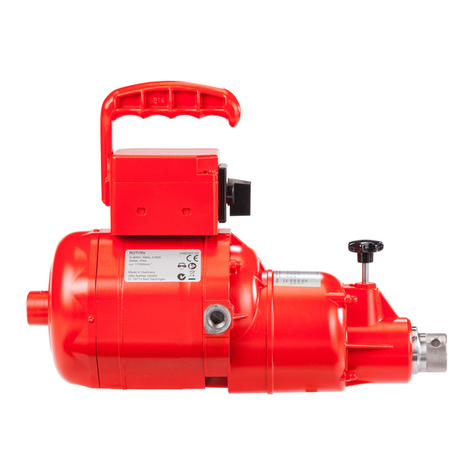
SUHNER ABRASIVE
SUHNER ABRASIVE Rotar 400V Technical document
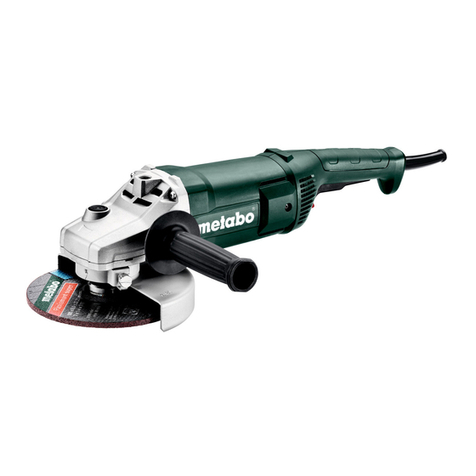
Metabo
Metabo W 2000-180 Original instructions
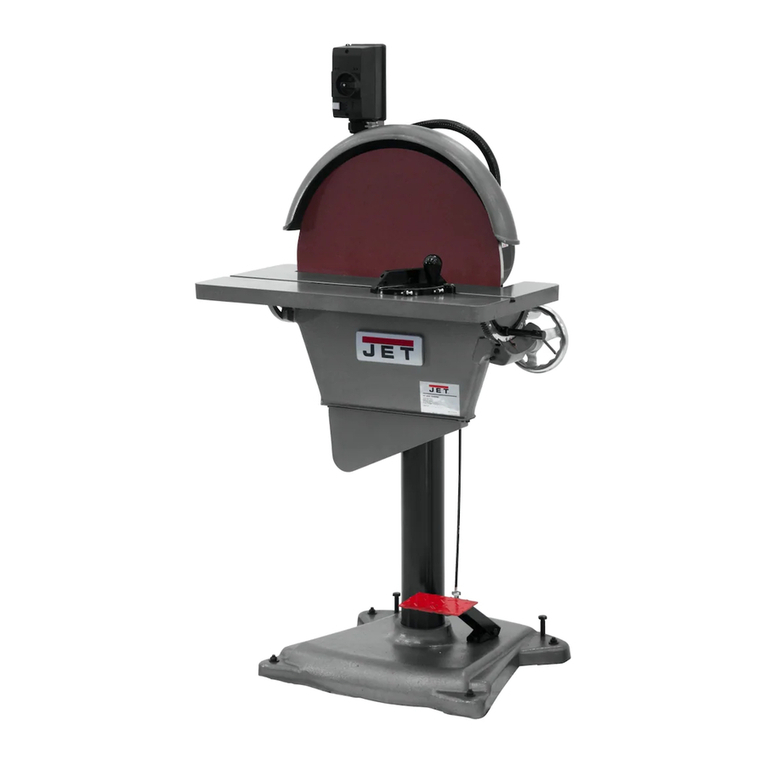
Jet
Jet J-4421-2 Operating instructions and parts manual
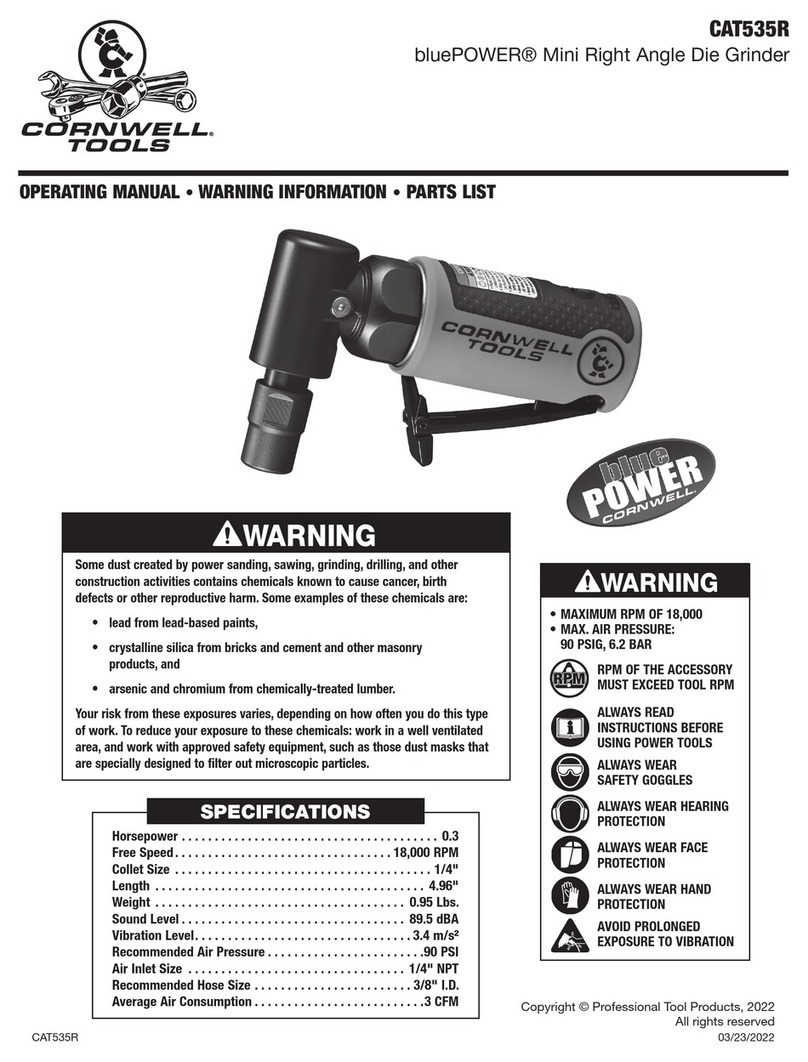
Cornwell Tools
Cornwell Tools bluePOWER CAT535R operating manual
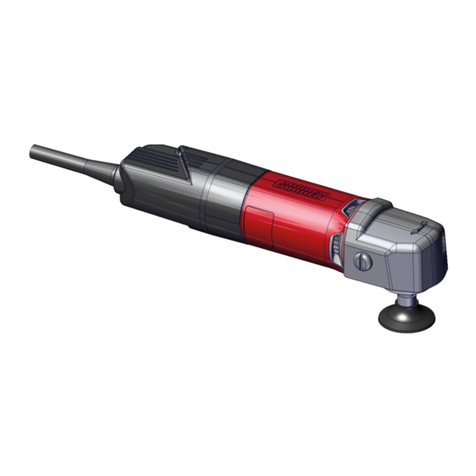
SUHNER ABRASIVE
SUHNER ABRASIVE UWC 20-R Technical document
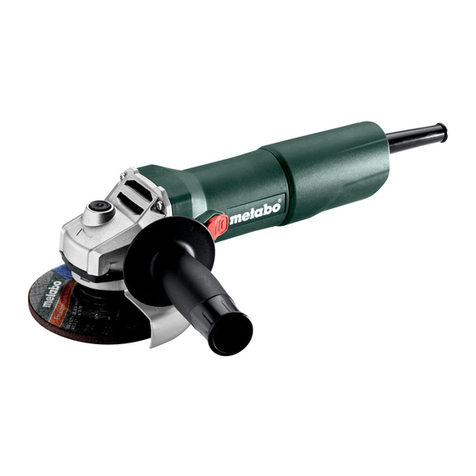
Metabo
Metabo W 750-115 operating instructions

